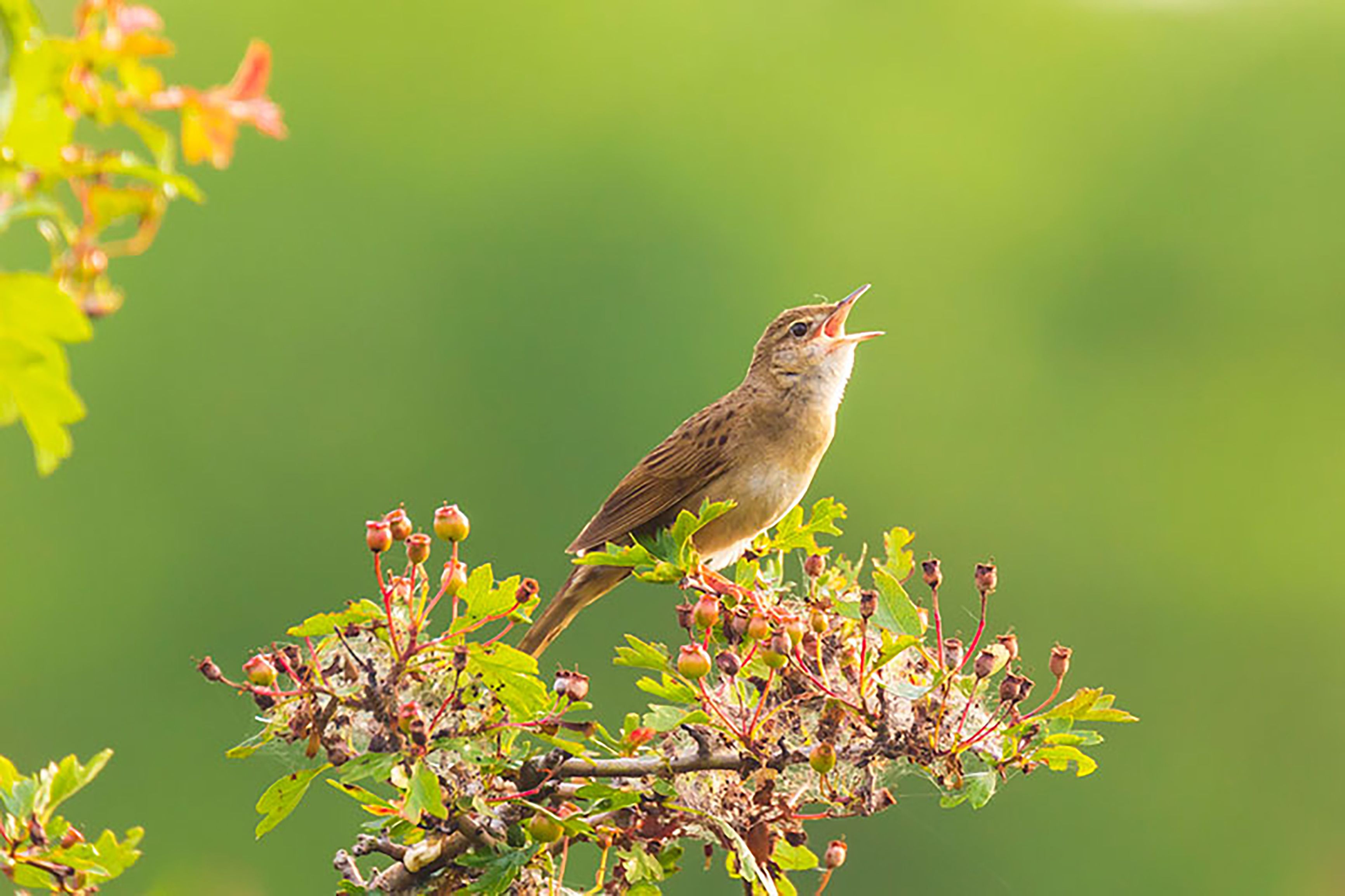FOR an hour on Sunday evening, Dúlra thought that some calamity had befallen the rare grasshopper warblers of the Belfast hills.
Maybe this secretive migrant hadn’t made it across the Meditereanean from West Africa, or maybe the windswept Slievenacloy just wasn’t remote enough for it any more.
But you’ll never see this mouse-like bird anyway – it’s only at dusk that you’ll know it exists at all when it makes an incredible, unique call.
Dúlra, like Dracula, willed the crimson sun haste on its descent. It hung over Priest’s Hill for what seemed like an eternity, its size magnified by the low trajectory. Swifts and swallows whizzed by overhead like legions of soldiers on their way to a far-off battle. In truth, their fight was with the army of insects that the first truly warm day of the year had coaxed into life and which, as evening approached, were swarming across Slievenacloy and beyond.
But it was the elusive grasshopper warbler that Dúlra had come in search of. In his youth he had only heard it once – but it was a sound he could never forget. We were fishing an old quarry pool on Colin Mountain and as dusk fell a weird sound echoed over the hillside – it was exactly what the reel of Dúlra’s fishing rod sounded like when he turned the handle.
“What the hell is that?” he asked an older fishing partner, who like so many in those days knew nature inside out. “It’s a grasshopper warbler over there among the rushes,” he said, pointing towards the city. “But don’t bother trying to spot it – you won’t!”
This bird skulks in thick foliage, heard but not seen. That amazing grasshopper-like call gave it its English name, while Its Irish name refers to its reclusiveness – ceolaire casarnaí, warbler of the undergrowth.
Our hills once echoed with many peculiar ‘dusk’ callers, like corncrakes and nightjars. Today, the grasshopper warbler is our sole survivor. That call is like a drug to Dúlra – he needs to hear it every year, just as a reassurance that all is not lost. There are no more than 5,000 pairs in Ireland, their number ever decreasing as the countryside is ‘improved’ by drainage and cover is removed.
Good morning! Listen carefully and you can hear the Grasshopper Warbler calling in the Lobster Field- am v pleased it has returned this year #birds #nature #Ireland pic.twitter.com/BBJCJBfJxx
— Wild Cottage Ireland 🦊 (@WildCottage) April 18, 2019
On Sunday Dúlra had walked the lonely hillside since eight o’clock, following skylarks and reed buntings from one field to the next. There wasn’t another soul here, and not a single car passed along the Flowbog Road the whole time he was there. This is the very definition of wilderness.
It’s only at dusk or dawn that you realise it wasn’t always like this. The low sun casts a long shadow and, like a kid’s 3D card which throws up a new image when titled, you suddenly realise that all this land was farmed, the deeply cut ridges of the potato crops – invisible underfoot when the sun is overhead – the only tragic sign of a community lost to famine.
At half nine, the last embers of the sun were finally eaten up by the western hills. Surely now the warblers would call out from their lairs. Dúlra took a seat at the roadside alongside the friendly Irish moiled cows, the silence of the night air broken only by them ripping off tufts of grass for their supper.
Sunday was a beautifully clear night, so the absence of sun didn’t mean darkness. The sky remained bright but it was increasingly difficult to make out shapes on the land.
Dúlra waited. Had another of our precious country birds gone the way of the corncrake and nightjar? Had we allowed another one to vanish on our watch?
Then he heard a trill in the distance. Could it be? Dúlra checked his phone: 10.11pm. He left the cows so he could be in complete silence. The sound again… it was a single bird across the hill. A minute later the same sound came from another direction. There was no mistaking it. Dúlra got his phone out and recorded it for posterity – the grasshopper warblers of the Belfast Hills were back.
Within five minutes, Dúlra felt like he was surrounded by an invisible army. Somehow these birds were living among the short grass that had barely grown through our cold spring. Rather than disappearing from our hills, it seemed there were more than ever, at least on Sliabh na Cloiche. It’s clear the conservation work on his Ulster Wildlife property is paying off in spades.
If you’ve seen or photographed anything interesting or have any nature questions, you can text Dúlra on 07801 414804.







